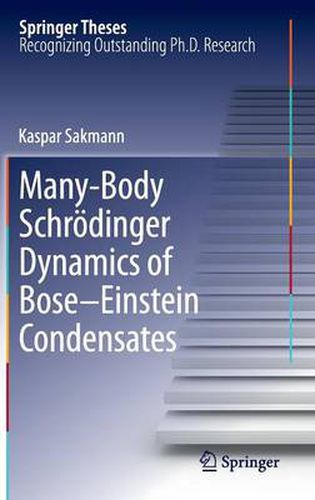Readings Newsletter
Become a Readings Member to make your shopping experience even easier.
Sign in or sign up for free!
You’re not far away from qualifying for FREE standard shipping within Australia
You’ve qualified for FREE standard shipping within Australia
The cart is loading…






At extremely low temperatures, clouds of bosonic atoms form what is known as a Bose-Einstein condensate. Recently, it has become clear that many different types of condensates – so called fragmented condensates – exist. In order to tell whether fragmentation occurs or not, it is necessary to solve the full many-body Schroedinger equation, a task that remained elusive for experimentally relevant conditions for many years. In this thesis the first numerically exact solutions of the time-dependent many-body Schroedinger equation for a bosonic Josephson junction are provided and compared to the approximate Gross-Pitaevskii and Bose-Hubbard theories. It is thereby shown that the dynamics of Bose-Einstein condensates is far more intricate than one would anticipate based on these approximations. A special conceptual innovation in this thesis are optimal lattice models. It is shown how all quantum lattice models of condensed matter physics that are based on Wannier functions, e.g. the Bose/Fermi Hubbard model, can be optimized variationally. This leads to exciting new physics.
$9.00 standard shipping within Australia
FREE standard shipping within Australia for orders over $100.00
Express & International shipping calculated at checkout
At extremely low temperatures, clouds of bosonic atoms form what is known as a Bose-Einstein condensate. Recently, it has become clear that many different types of condensates – so called fragmented condensates – exist. In order to tell whether fragmentation occurs or not, it is necessary to solve the full many-body Schroedinger equation, a task that remained elusive for experimentally relevant conditions for many years. In this thesis the first numerically exact solutions of the time-dependent many-body Schroedinger equation for a bosonic Josephson junction are provided and compared to the approximate Gross-Pitaevskii and Bose-Hubbard theories. It is thereby shown that the dynamics of Bose-Einstein condensates is far more intricate than one would anticipate based on these approximations. A special conceptual innovation in this thesis are optimal lattice models. It is shown how all quantum lattice models of condensed matter physics that are based on Wannier functions, e.g. the Bose/Fermi Hubbard model, can be optimized variationally. This leads to exciting new physics.